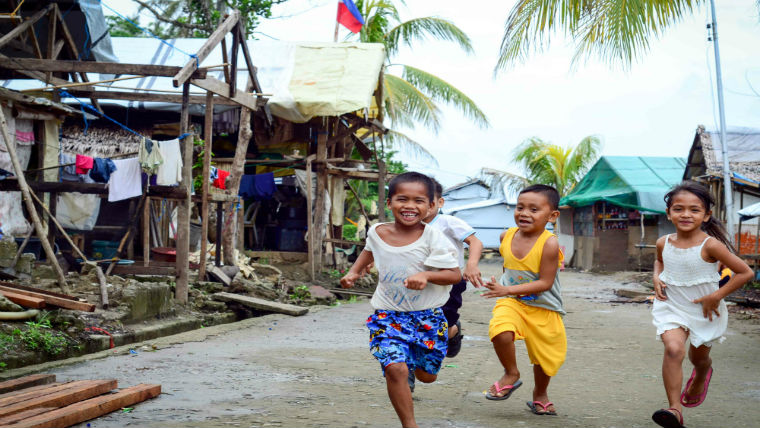A year since Typhoon Haiyan: Recovery & Resilience
This Saturday, November 8, marks exactly one year since the world’s strongest typhoon slammed the Philippines with unimaginable force.
In the last 12 months, World Vision has continued to stand with survivors as they begin to rebuild their lives and look toward the future. Since then, World Vision has reached 750,000 individuals with emergency assistance and help with rebuilding their lives. Around 473,000 of these survivors were children.
Since then, World Vision has reached 750,000 individuals with emergency assistance and help with rebuilding their lives. Around 473,000 of these survivors were children.
Response Director Andrew Rosauer says that whilst he is proud that his team has given the response a hundred per cent, the one year mark is about the emotional losses, and he and his team will take part in the candlelight memorial alongside the communities in Tacloban from 4pm on the 8th.
“It is important to remember those who lost their lives this time last year, and to honor the survivors’ courage, tenacity and strength. It is also a time to acknowledge the people who are still finding it difficult to adjust with so many losing loved ones, their homes, and their livelihoods.
“We have had a focus on ‘building back better’, but there are still many challenges ahead as we work with the communities to restore livelihoods and to prepare for disasters yet to come.”
Finding and sustaining long-term income opportunities continues to be the largest problem within Haiyan-affected communities, with so many people losing their usual sources of income, or losing the household breadwinner in the storm. Another is improving resilience and cutting down their vulnerability for future emergencies.
To date, World Vision has provided almost 2,500 houses for the most vulnerable families – usually child-headed households, single parents, the disabled and the elderly.
Apart from shelter support, families also had the opportunity to receive assistance with livelihoods, health, education and other key needs identified. Cash-for-work programs have involved and supported more than 85,000 people and more than 21,000 have benefitted from livelihoods that include livestock distribution, skills trainings, business start-up toolkits and working with community savings groups.
“This year has had so many disasters that required the world’s attention: From the crisis’ in Syria, Gaza, South Sudan, the Ukraine and the Ebola outbreak– it’s fair to say that the typhoon has been sharing the world stage with other pressing issues”, Rosauer said.
“But the 8th of November is a time for the typhoon to be remembered. Filipino’s are always smiling and have a remarkably positive outlook. Behind the day-to day commitment of moving on, there are many heavy hearts.
After November 8, World Vision will move into the rehabilitation stage, the final phase of emergency response. Rosauer recognises the vital part that communities play in both decision-making and physical workmanship when building back, so that they are not only empowered, but also have the skills to rebuild if any other future shocks occur. “We want to enable survivors to restore their dignity by continuing to be involved in their own recovery”, he says.